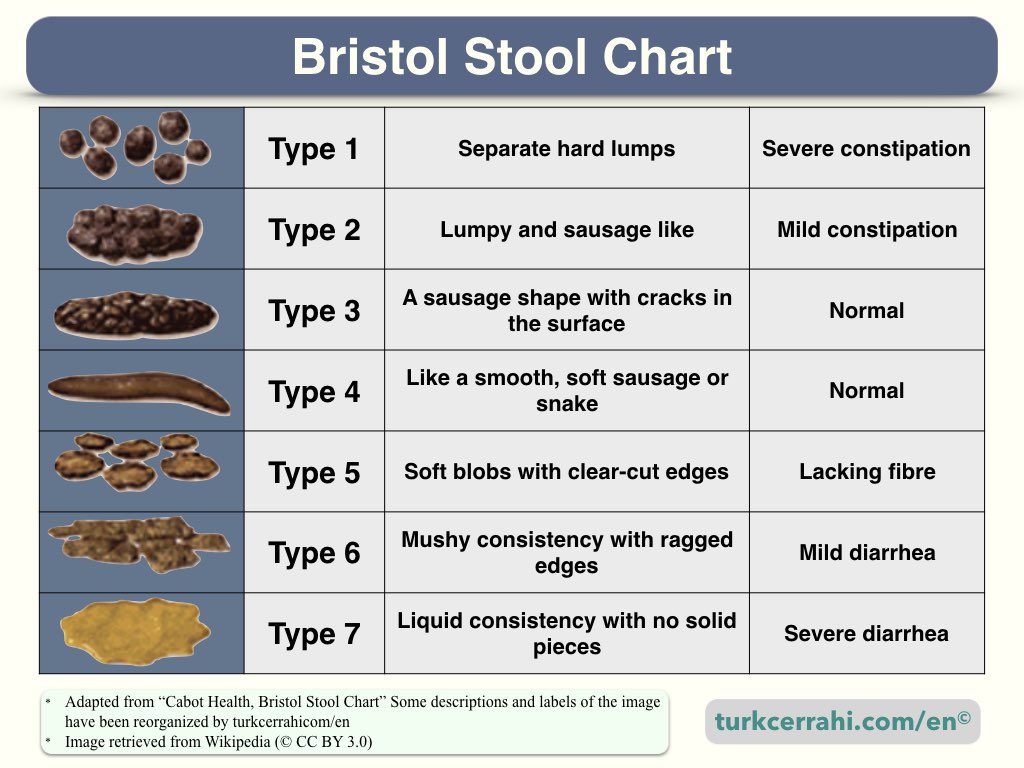Diarrhea
Diarrhea is defined in two ways: passing more than three bowel movements (stools) per day or having a watery stool (>300 grams). Typically, water accounts for 60-75% of stool. The water content of diarrhea exceeds this proportion.
Everyone can experience diarrhea occasionally, but if it lasts longer than two weeks, it may indicate an underlying condition. Similarly, recurrent episodes of diarrhea are also significant.

Image retrieved from Wikipedia under the Creative Commons Attribution-ShareAlike 3.0 Unported licence (CC BY-SA 3.0). (Image’s Page). The copyright holder of this work is Cabot Health (Source). Some of the image’s descriptions and labels have been reorganized by turkcerrahi.com/en
There are four pathophysiological mechanisms of diarrhea:
- Osmotic retention (inability to absorb water-soluble substances that draw water into the intestine)
- Lactose intolerance (inability to digest sugars)
- Excessive antacid use (unabsorbed electrolytes in antacids)
- Secretory diarrhea (secretion of fluid and electrolytes into the lumen)
- Steatorrhea (stimulation of the small and large intestines by fatty acids)
- Ileal resection (dihydroxy bile acids)
- Pancreatic islet cell tumors (vasoactive intestinal peptide)
- Carcinoid tumors (serotonin and substance P)
- Medullary thyroid cancer (calcitonin)
- Toxic bacteria (E. coli, V. cholerae, and others)
- Exudation (secretion of protein, blood, or mucus into the lumen from an inflamed bowel)
- Inflammatory bowel diseases
- Parasitic and bacterial infestations (amoeba, salmonella)
- Infiltrative diseases (lymphoma, Whipple’s disease)
- Mucosal-lumen disruption from bowel content
- Rapid transit, slow transit, bacterial overgrowth, and irritable bowel syndrome (IBS) can all cause diarrhea, including neural and psychological diarrhea.